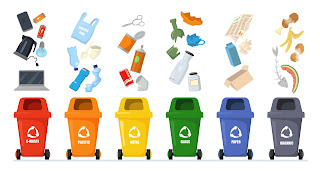Embracing Sustainable Business Practices: A 5-Step Guide to Success
In today’s world, adopting sustainable business practices is no longer optional—it’s essential. As consumers become more eco-conscious, businesses must take meaningful steps to reduce their environmental impact and align their operations with sustainability goals. SwagCycle’s comprehensive 5-step guide provides an excellent framework to help companies embrace sustainability, improve brand reputation, and appeal to today’s environmentally aware audience.
Why Are Sustainable Business Practices Important?
Sustainability in business isn’t just about reducing carbon footprints; it’s a strategic approach that benefits both the planet and your bottom line. By integrating sustainable practices, businesses can:
- Enhance Brand Image: Consumers are drawn to companies that prioritize eco-friendly operations.
- Reduce Costs: Energy efficiency, waste reduction, and sustainable sourcing often lead to long-term savings.
- Attract Talent: Employees want to work for organizations committed to a greener future.
- Gain a Competitive Edge: Sustainability initiatives differentiate your brand in a crowded marketplace.
SwagCycle’s 5-Step Guide to Sustainable Business Practices
SwagCycle’s proven framework simplifies the process of integrating sustainability into your business model. Let’s dive into these actionable steps:
1. Assess Your Current Impact
Begin by analyzing your current environmental impact. Identify areas such as energy use, waste generation, and material sourcing. Tools like carbon footprint calculators can provide a baseline to measure progress over time.
2. Set Clear Sustainability Goals
Define specific, measurable, and achievable goals tailored to your industry. For example, commit to reducing waste by 30% within a year or transitioning to 100% renewable energy sources by a specific date.
3. Incorporate Circular Economy Principles
Shift from a linear economy to a circular one by rethinking how products are designed, used, and disposed of. Programs like SwagCycle can help repurpose or recycle outdated branded merchandise, ensuring nothing goes to waste.
4. Engage Stakeholders
Educate employees, suppliers, and customers about your sustainability initiatives. Collaboration and transparency are crucial for success. For instance, highlight your efforts in marketing campaigns or partner with eco-friendly vendors to strengthen your supply chain.
5. Monitor and Adjust
Sustainability is an ongoing journey. Regularly review your progress and adapt strategies to achieve better results. Use key performance indicators (KPIs) like energy savings, waste reduction, or customer satisfaction to measure success.
The Benefits of Sustainable Business Practices
Businesses that prioritize sustainability reap long-term benefits, including:
- Increased Customer Loyalty: Eco-conscious consumers prefer brands aligned with their values.
- Improved Profitability: Sustainability initiatives often reduce operational costs and open doors to new markets.
- Regulatory Compliance: Staying ahead of environmental regulations minimizes risks and fines.
Start Your Journey Today
Integrating sustainable business practices doesn’t have to be overwhelming. With SwagCycle’s 5-step guide, you can create a roadmap that aligns your operations with sustainability goals while resonating with eco-conscious consumers.
Are you ready to make a difference? Learn more about how SwagCycle can help you lead the charge toward a greener, more sustainable future. Together, we can build a planet-friendly business that thrives for years to come.



Comments
Post a Comment